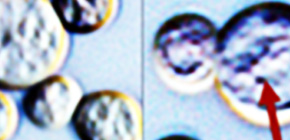
Sulfothermophilic red alga, Galdieria sulphuraria, efficiently recovers rare earth elements in acidic solutions
G. sulphuraria's mechanism for recovering rare earth elements was different from biosorption
A group of researchers from universities and research institutes have clarified that Galdieria sulphuraria , sulfothermophilic alga (a red alga that lives in sulfuric acid-rich springs) possessing the capacity to effectively recover rare earth elements, elements used in the construction of advanced technological devices.
• Faculty of Life and Environmental Sciences, University of Tsukuba -- MINODA Ayumi , Assistant Professor
• Research Department for Measurement Standards, National Institute of Advanced Industrial Science and Technology (AIST) -- MIYASHITA Shin-ichi , Researcher, INAGAKI Kazumi , Laboratory Chief
• Osaka University -- YAMAMOTO Takaiku ,Visiting Professor
• Tokyo University of Pharmacy and Life Sciences -- TSUZUKI Mikio , Professor
The recycling of rare earth elements is a challenge due to concerns about the depletion of natural resources and effects on the environment. In recycling rare earth elements, technology for selectively and efficiently recovering the small amounts of rare metals in waste solutions containing large amounts of iron and copper is needed. In order to solve problems about recovery cost and rates, a variety of methods have been developed but have not become commonplace.
Generally metal recovery by microorganisms costs less than methods using chemicals and ion-exchange resin and is more environmentally friendly. The major principle of conventional metal recovery methods using microorganisms is biosorption -- making use of the negative charge on the cell surface to recover positively-charged metal ions, and many ways to recover rare earth elements have been proposed; however, these methods have challenges:
(1) In a solution containing a mixture of different metals, competition between the different metal ions over the negative charge on the cell surface increases and the recovery rates decrease.
(2) Under acidic conditions, negative charges on the cell surface are blocked by positively charged hydrogen ions and the recovery rate at low concentrations declines.
Thus, in order to efficiently recover rare earth elements in acidic metal waste containing many kinds of metals using microorganisms, Professor Minoda and others paid attention to the sulfothermophilic red alga, Galdieria sulphuraria. This red alga was reported to efficiently recover copper at a low concentration of 6 mm under an anaerobic condition 30 years ago.
This time, this group has clarified:
(1) Galdieria sulphuraria can efficiently incorporate rare earth elements contained in aqueous acid at low concentrations into cells under certain conditions. The selectivity of rare earth elements can increase depending on cultivation conditions and pH conditions.
(2) Galdieria sulphuraria's mechanism for recovering rare earth elements was different from biosorption.
This group's results will be a big step toward the development of new technology for efficiently recovering rare earth elements from acid metal effluents.
Abstract
The demand for rare earth elements has increased dramatically in recent years because of their numerous industrial applications, and considerable research efforts have consequently been directed toward recycling these materials. The accumulation of metals in microorganisms is a low-cost and environmentally friendly method for the recovery of metals present in the environment at low levels. Numerous metals, including rare earth elements, can be readily dissolved in aqueous acid, but the efficiency of metal biosorption is usually decreased under the acidic conditions. In this report, we have investigated the use of the sulfothermophilic red alga Galdieria sulphuraria for the recovery of metals, with particular emphasis on the recovery of rare earth metals. Of the five different growth conditions investigated where G. sulphuraria could undergo an adaptation process, Nd(III), Dy(III), and Cu(II) were efficiently recovered from a solution containing a mixture of different metals under semi-anaerobic heterotrophic condition at a pH of 2.5. G. sulphuraria also recovered Nd(III), Dy(III), La(III), and Cu(II) with greater than 90 % efficiency at a concentration of 0.5 ppm. The efficiency remained unchanged at pH values in the range of 1.5–2.5. Furthermore, at pH values in the range of 1.0–1.5, the lanthanoid ions were collected much more efficiently into the cell fractions than Cu(II) and therefore successfully separated from the Cu(II) dissolved in the aqueous acid. Microscope observation of the cells using alizarin red suggested that the metals were accumulating inside of the cells. Experiments using dead cells suggested that this phenomenon was a biological process involving specific activities within the cells.
Figure 1
Figure 2
Figure 3
Figure 4
Figure 5
To learn more about this research, please view the full research report entitled " Recovery of rare earth elements from the sulfo-thermophilic red alga Galdieria sulphuraria using aqueous acid " at this page of the Applied Microbiology and Biotechnology website.
